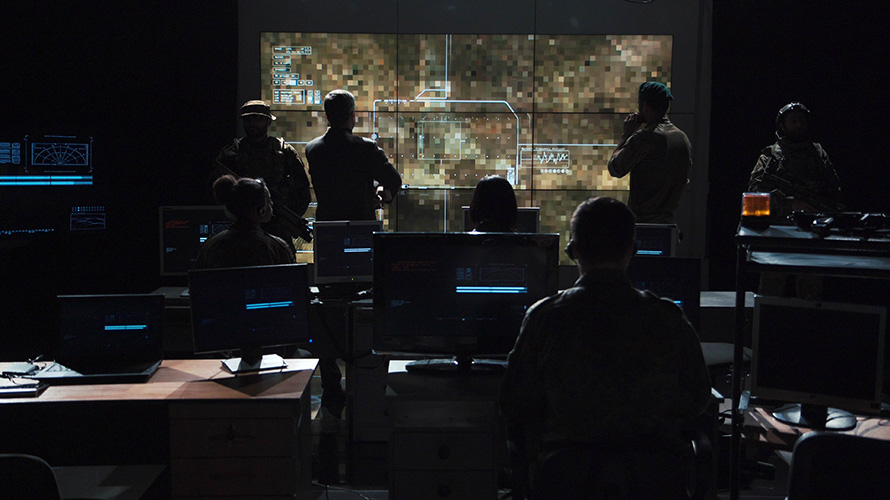
Multi-domain command and control crosses air, land, sea, space, cyber, and the electromagnetic spectrum.
WASHINGTON: The Defense Information Systems Agency is seeking prototypes “for a radically new set of capabilities” in Joint Electromagnetic Spectrum Operations (JEMSO) needed to improve planning, management, situational awareness, maneuverability, and data sharing.
A June 30 DISA white paper request envisions a Joint Electromagnetic Battle Management (EMBM) system to allow JEMSO cells to better operate in “constrained, contested, and congested” electromagnetic operations environments.
The military uses the EMS for a range a capabilities, including communications, navigation, and radar. Adversaries such as China and Russia understand the importance of EMS to US military operations and for years have been investing in and developing disruptive capabilities, known collectively as electronic warfare.
“To prevail in any conflict, the Joint Force must win the fight for EMS superiority,” the request notes.
As to the prototype, “This work has never been done before within the Department of Defense and requires a novel approach,” the DISA announcement notes. “The objective is to deliver initial capabilities for Command and Control (C2) and decision support capability areas. The prototype shall deliver system capabilities that will significantly advance the EMS planning capabilities, improve EMS data sharing, and enable Joint C2 of JEMSO that provides the EMS maneuver capability necessary for EMS superiority. …Without this system, JEMSOCs will have inadequate capabilities to plan, direct, monitor, and assess joint operations in constrained, contested, and congested EMOE.”
The RWP says that any successful prototype satisfying “a minimum viable capability release (MVCR) that provides measurable, operational improvements and impact within a year” could be awarded a follow-on contract to move to production with no further competition.
DISA is applying an Agile methodology to the project. “Each iteration after the MVCR will continue to add and/or refine functionality/capability to mature the solution and provide a rich experience,” the RWP says.
The prototype EMBM is meant to address several ongoing challenges, including “increasing threats” from adversaries as well as “debilitating unintentional electromagnetic interference” from allies and partners, who do not always coordinate or communicate their EMS activities in advance.
The prototype is ultimately envisioned as replacing currently inadequate “traditional, manual, time-, and labor-intensive methods of managing the myriad of electromagnetic emitters and apertures on the
modern battlefield.”
As Breaking Defense readers know, US military EMSO capabilities have not significantly advanced since the end of the Cold War, according to experts. This despite the imperative for EMS dominance to enable many aspects of modern warfare, especially All Domain Operations.
The lack of progress in this area has also occurred despite the DoD publishing three comprehensive EMS strategies over the past eight years — most recently, in October. Two of those strategies were simply never implemented, and the implementation plan for the third is behind schedule. Defense Secretary Lloyd Austin told Rep. Jim Langevin last month that Gen. John Hyten, the vice-chairman of the joint chiefs of staff, is leading the effort to complete the implementation plan for the latest strategy.
The reasons for a decades-long stagnation are myriad, according to experts. Some point to the prevailing viewpoint that EMSO is merely tactical versus strategic, degrading its importance. Others say its abstractness renders it the “most unheralded warfighting space.” Still others say it boils down to a lack of investment and Pentagon bureaucracy.
Responses are due to DISA on Aug. 2.






















